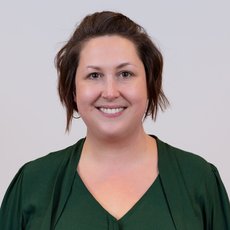Every year Local Authorities in England provide a figure for how many people they believe are sleeping rough on a typical night between 1 October and 30 November.
Here we explain how this is done, and what methodologies are used to collate the national rough sleeping statistics.
Homeless Link is funded by the Department for Levelling Up, Housing and Communities (DLUHC) to support local authorities in England to undertake either a count or an intelligence-led estimate of the number of people rough sleeping. Below are the answers to the most common questions people ask in relation to this process.
How do you define ‘rough sleeping’?
Since 2010, the figures used for national statistics have used the following definition of rough sleeping:
“People sleeping, about to bed down (sitting on/in or standing next to their bedding) or actually bedded down in the open air (such as, on the streets, in tents, doorways, parks, bus shelters or encampments). People in buildings or other places not designed for habitation (such as stairwells, barns, sheds, car parks, cars, derelict boats, stations, or ‘bashes’).
The definition does not include people in hostels or shelters, sofa surfers, people in campsites or other sites used for recreational purposes or organised protests, squatters or Travellers sites.
Do local authorities count every person who is homeless?
The purpose of the Snapshot Estimates Project is to produce a snapshot figure of how many people are sleeping rough across England on a typical night in autumn. The methodologies available must be consistent across all regions in England. This allows the DLUHC to track trends in rough sleeping numbers. The data does not include people who do not fall within the definition e.g. those in hostels, temporary accommodation or sofa surfing.
What is the difference between a ‘count’ and an ‘evidence-based estimate’?
Accurately recording the number of people sleeping rough across England on any one night is a huge challenge. The snapshot methodologies of a count or evidence-based estimate are used to allow local authorities to apply an approach that most accurately reflects rough sleeping in their area. The following methodologies used have allowed the snapshot figure to remain the only consistent time series of data to measure the changes in rough sleeping across the country.
A local authority may choose to do a physical count if there is a high number of people sleeping rough in the area and sleep sites are both visible and easily accessible, such as urban areas. Likewise, if there has been a significant change in the number of rough sleepers and there is a lack of evidence about who individuals are, local authorities may undertake a count. This is especially useful if there is a disagreement between partner agencies in the area about who is sleeping rough and where.
Estimates are not guesses, but are intelligence-led and involve bringing together local agencies to agree on a figure of how many people are sleeping rough on the chosen night. Areas may choose to do an estimate if the local context of rough sleeping makes physically counting impractical (e.g. in large rural areas or areas with rough sleepers in areas that are inaccessible or unsafe to go into).
Some areas in England have much better local intelligence, which if combined can provide a more accurate picture. It is also possible to undertake a spotlight count on the chosen night, and then use this intelligence with information from local partner agencies. This is called an “evidence-based estimate informed by a spotlight count”, but is still officially recorded as an estimate.
Is the information collected about rough sleepers shared?
Snapshot estimates provide an opportunity to evaluate the extent of rough sleeping, including which obstacles are preventing people from leaving the streets. This is useful for Local Authorities who do not have regular street outreach and support services. At a local level, partner agencies agree on information sharing protocols in order to share individual information which informs support plans, as well as avoiding double counting.
Local Authorities share aggregated data in statistical returns to the DLUHC. They provide the total number of people sleeping rough, as well as numbers of British people, EU nationals, non-EU nationals, women, men, under-18s and young people. No personalised or geographical data is shared with the government.
What is the role of Homeless Link?
Homeless Link’s role is to both provide the necessary training and guidance for local authorities delivering snapshot estimates and to officially verify each figure. We provide the training and support for independent verifiers and collate all of the aforementioned demographic information.
Where can I find out more information about the methodologies used and previous figures?
If you are interested in comparing previous figures, you can access all the information – plus more about other homelessness data sets on the DLUHC website. You can view every Local Authority and track the trends and trajectories of rough sleeping figures.
